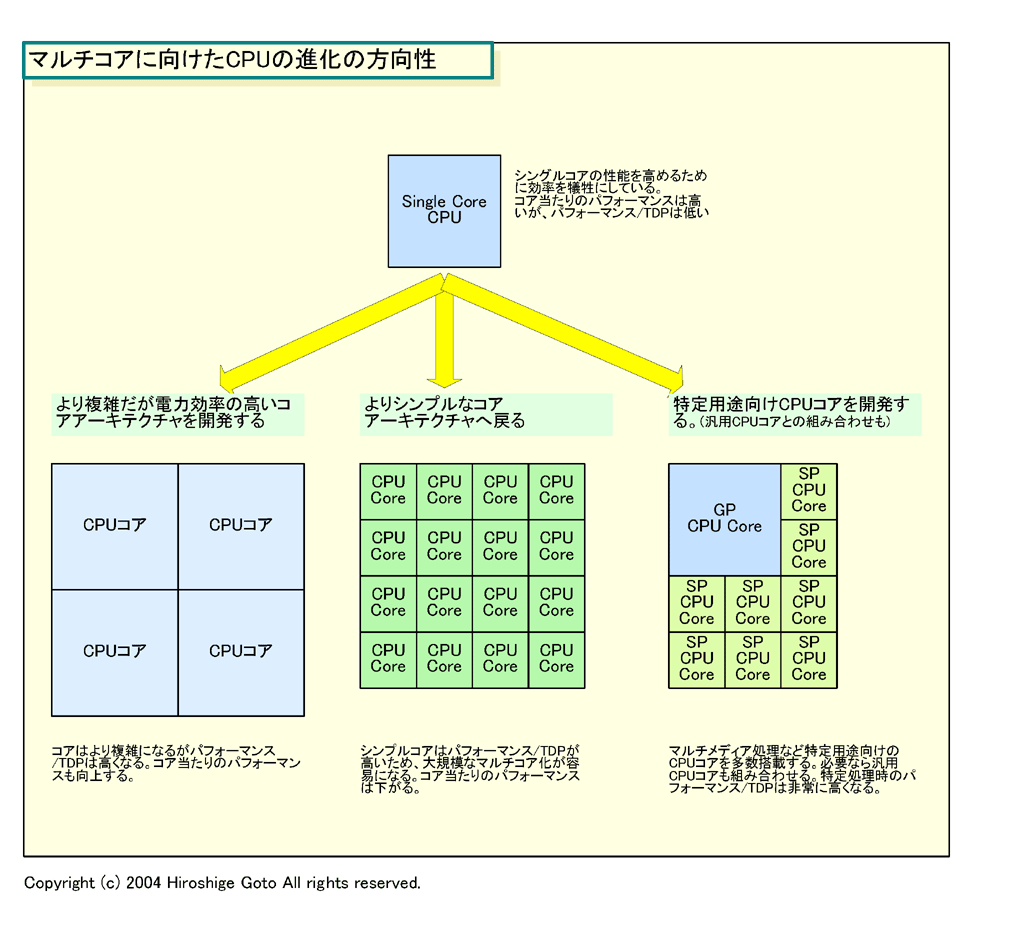Jaws said:
Could someone translate the text in that diagram please. Thanks in advance!
The original article.
http://pc.watch.impress.co.jp/docs/2004/1228/kaigai146.htm
Worth taking a look since it has a link to one Intel slide that sounds and looks very, very familiar.
The Intel presentation says how they are going 'many-core' looking at numbers up to 10-100. Should really click on that slide for the rest of the so-familiar 'key words'.
Rest of the article just briefly summarizes problems, solutions of going 'many-core' and TDP(Thermal Design Power). The slide version linked to is of course, a 'Cell example'. Note that Goto is just making 'educated speculations'.
I have trouble understanding what he is really trying to say there, since he refers to 'performance' and 'performance/TDP' seperately. I assume he means the ratio. In which case...
- single core: high performance, p/tdp low
- multicore, 'sophisticated cores' - cores more complex, high performance, p/tdp not too high.
- multicore, 'simpler cores' - high p/tdp, scalable, performance/efficiency suffers.
- 'customized' CPU core - many specialised multimedia CPU cores linked to a general purpose CPU. very high p/tdp if used properly.



